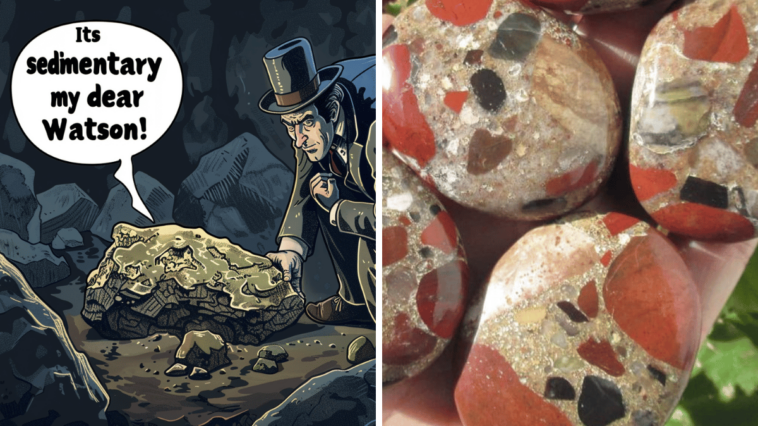Most of us know the three main types of rocks: igneous, metamorphic, and sedimentary. But how far in-depth have you gone when learning about them? Each type of rock displays a piece of Earth’s history, and knowing the differences between them and what they represent is a massive part of learning about our natural world.
So, let’s take a closer look into the fascinating world of sedimentary rocks, how they’re formed, and what they’re made of!
What Are Sedimentary Rocks?
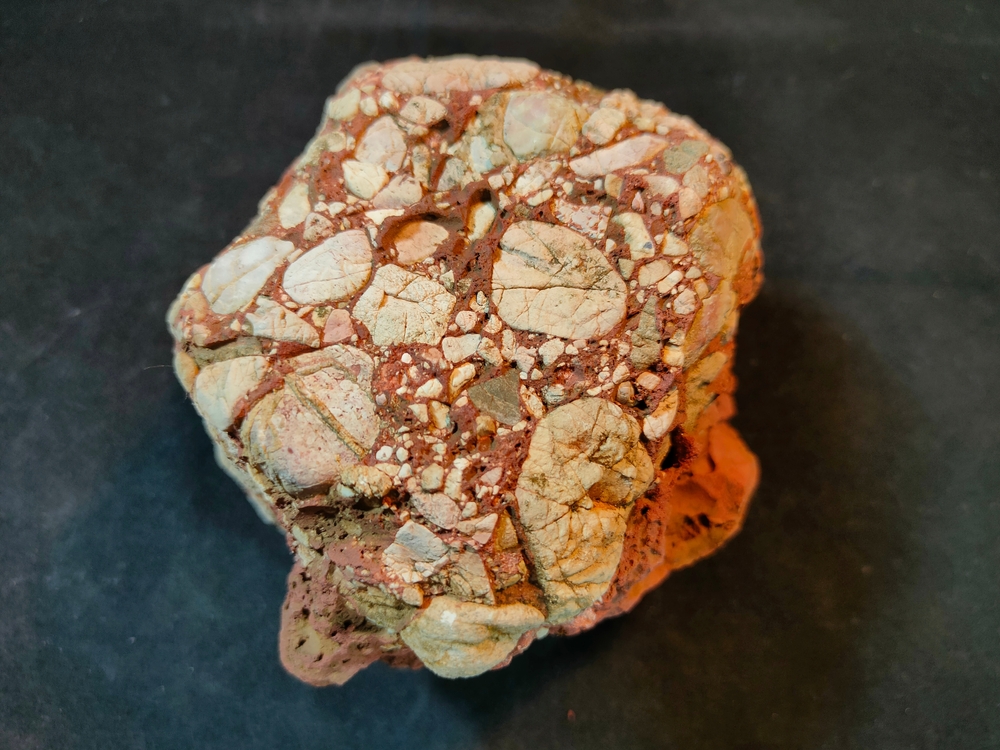
Sedimentary rocks are formed from…you guessed it, sediment.
Sediment is material produced by erosion and the term is typically used to describe larger layers of weathered material. The most common source of the sediment that forms these stones is actually igneous stone, which releases particles after prolonged exposure to the elements.
Sediments also come in the forms of things like massive quantities of siliceous diatom skeletons gathering in one place. Thus, the source of the sediments that makes up these stones can be either biogenic in origin or come directly from other rocks.
Over time, the amount of sediment increases until there is significant pressure on the bottom layer. After being pressed together and heated for long enough, along with a few other processes that can be involved, these sediments compact to form fairly uniform layers of rock.
So, it’s pretty simple: sedimentary rocks are those formed by sediment which hasn’t yet undergone the massive changes associated with metamorphic rocks.
Types of Sedimentary Rocks
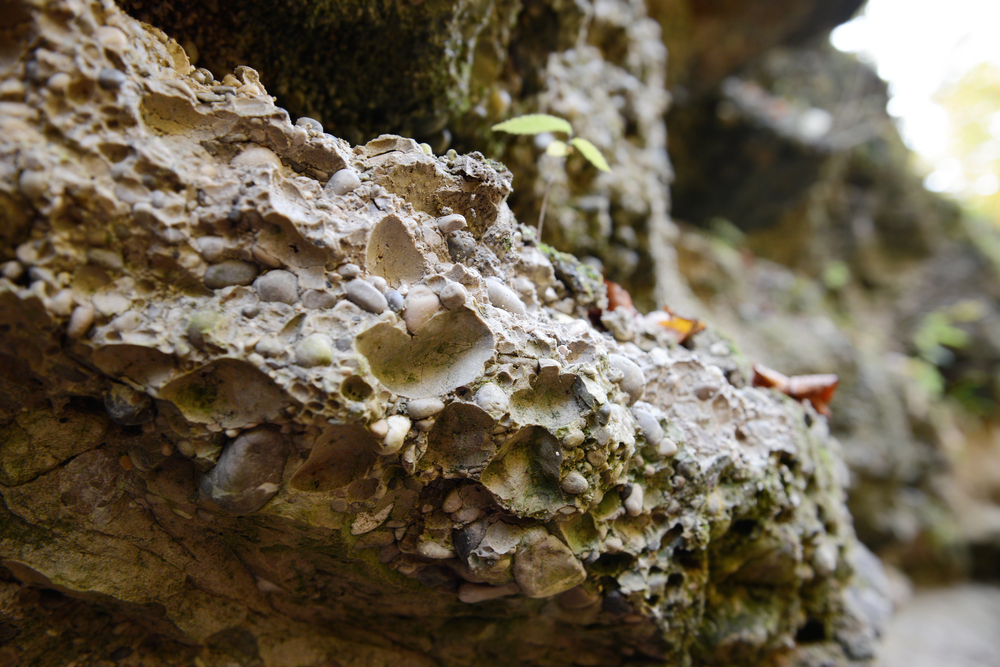
There are two primary types of sedimentary rocks floating about the Earth’s crust.
The first is detrital rock. Detrital rock is the type referenced above, where we talk about the wearing of igneous stones creating sediment that builds up. Sandstone isn a good example of this kind of rock, being comprised largely of compacted quartz grains with other impurities created as boulders of igneous stones with a high-silica content erode in wind and rain over time.
There are also chemically-generated rocks. These are derived from saturated fluid solutions containing minerals. The sediment precipitates out of the solution and accumulates due to chemical activity or reduction of fluid volume over time, creating another source for sediment to emerge.
Limestone is, perhaps, one of the most famous rocks with a chemical origin. It’s made largely of calcium carbonate, which is present in vast amounts in oceanic waters. Because of its known origin, namely the accumulation of carbonate compounds over time under the ocean, limestone is usually associated with ancient oceans and sea beds when found on dry land.
Clastic Sedimentary Rocks
- Sandstone – Composed mainly of sand-sized mineral particles or rock fragments.
- Shale – Very fine-grained rock composed of mud (a mix of clay and silt) that often splits into thin sheets.
- Conglomerate – Consists of rounded gravel and pebble-sized particles cemented together.
- Breccia – Similar to conglomerate but with angular fragments.
- Siltstone – Made of silt-sized particles, finer than sandstone but coarser than shale.
- Mudstone – Similar to shale but does not split into thin layers.
Chemical/Biochemical Sedimentary Rocks
- Limestone – Primarily composed of calcite (CaCO3) and forms from the accumulation of shell, coral, algal, and fecal debris or by direct chemical precipitation from water.
- Dolomite (Dolostone) – Similar to limestone but contains the mineral dolomite (CaMg(CO3)2).
- Chert – Made up of microcrystalline quartz and forms from the precipitation of silica from water.
- Flint – A variety of chert that forms in chalk or marly limestone.
- Jasper – Red or brown chert, colored by iron oxide.
- Halite (Rock Salt) – Forms through the evaporation of saline water in arid climates.
- Gypsum – Forms from the evaporation of seawater and is used in the manufacture of plaster and drywall.
- Travertine – A form of limestone deposited by mineral springs.
- Tufa – Similar to travertine but less consolidated; forms in ambient-temperature water bodies.
- Evaporites – Formed by the evaporation of saline water, leading to the precipitation of minerals like halite, gypsum, and anhydrite.
Organic Sedimentary Rocks
- Coal – Forms from the accumulation and compression of plant material over millions of years.
- Oil Shale – Contains organic matter that can be converted into petroleum and natural gas.
Mixed Origin
- Marl – A calcium carbonate or lime-rich mud or mudstone which contains variable amounts of clays and silt.
Formation of Sedimentary Stone
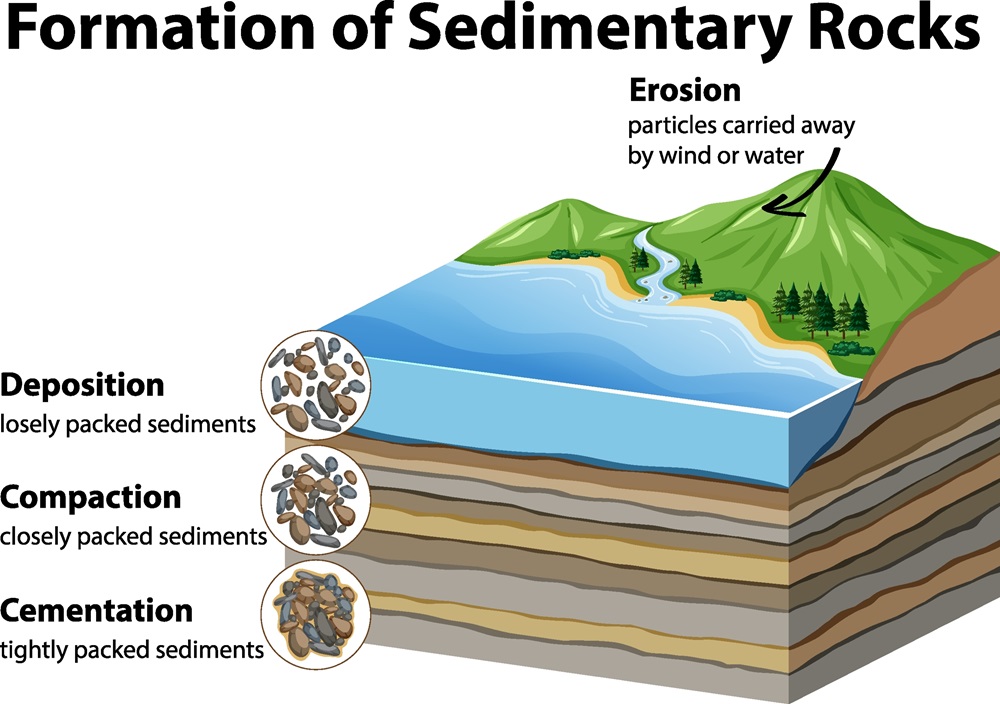
Sedimentary stones form through a process that starts with the weathering and erosion of existing rocks, which breaks them down into smaller particles. These particles, or sediments, are then transported by water, wind, ice, or gravity and deposited in layers in various environments such as rivers, lakes, oceans, or deserts.
Over time, these layers of sediment accumulate and undergo compaction under the weight of additional layers, squeezing the particles closer together. Alongside compaction, a process called cementation occurs, where minerals dissolved in the water between the sediment particles crystallize and glue the particles together, turning the sediments into solid rock.
This is all a very general process. Each type of rock forms just as bit differently, but the very nature of the sedimentary stone makes them a little bit easier to track throughout their historical formation. These layers in the bedrock can often give huge hints as to what the area previously looked like.
Where Does Sedimentary Rock Fit in the Geological Cycle
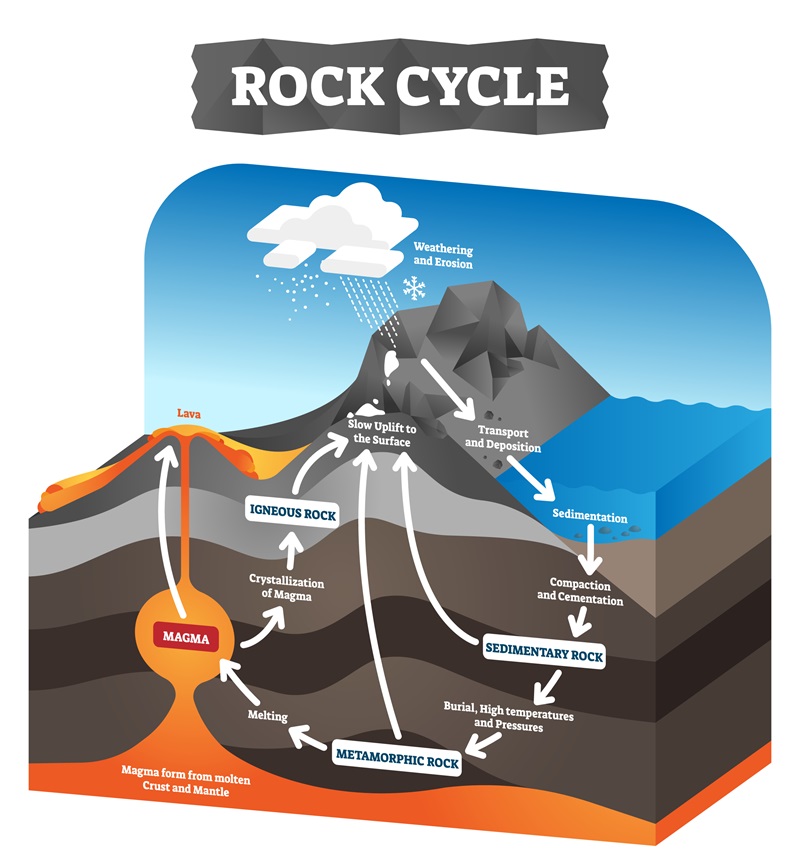
Rocks go through a very long cycle, by which they are created and destroyed.
In essence:
- Magma reaches a lower temperature at which it can cool, generally through volcanic activity or through underground fluid dynamics which bring it top a higher point in the Earth’s mantle or crust.
- Cooled magma becomes igneous rock. These are generally classified by coarseness and chemical composition. Igneous rocks are almost always made up of several minerals in varying levels of crystallization.
- Igneous rock is exposed to weathering as it comes out of the ground, creating smaller particles. Particles from other detritus sources sometimes begin the process of becoming a sedimentary rock here instead, especially when of biogenic origin.
- A sedimentary rock that gets pushed under the surface by tectonic action may undergo metamorphosis, brought on by the intense heat and pressure underneath our feet.
- Metamorphic rock eventually melts when brought down to low enough in the Earth, or is brought to the surface where it weathers into sediment once more.
So, sedimentary stones are generally at a midpoint in the rock cycle.
Common Physical Properties of Sedimentary Rocks
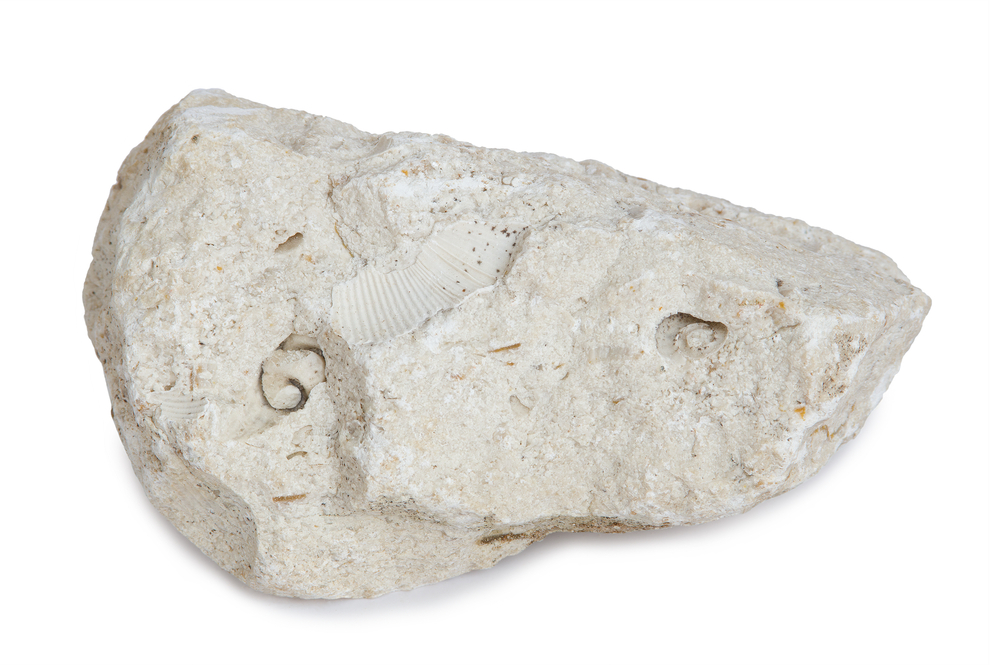
Because of their unique method of formation, sedimentary rocks have some common physical properties that can be extrapolated to most of the stones that fall under this heading.
Grain size is one of the most important pieces of the kind of sedimentary an individual rock will be. Breccia, for instance, may be comprised of very large pieces of stone that have been cemented together after compaction while shale is comprised of incredibly small particles.
Compaction is a bit hard to picture at times. Essentially, the mass accumulates to the point that the bits underneath are forced together. This compaction occurs from all angles and the force behind it is referred to as lithostatic pressure.
Cementation is also a common feature. After compaction, pores remain in the sediments where water can get in. This water contains minerals that are left behind over time as the water leaves to sedimentary rock, creating a binding structure throughout the stone comprised of roughly the same minerals as the rest of the rock.
Because of their formation involving sediment, in other words, being on the surface at some point, sedimentary stones are the most common source of fossils. In metamorphic rocks, extreme heat and pressure generally destroy them. Igneous rock never has a chance for them to form, since it’s the “youngest” of the rock types and is derived directly from the cooling of magma.
Because of the way sediments accumulate and bind together, sedimentary rocks are generally classified by their sediment size rather than their chemical makeup. The chemical makeup of these stones can be quite similar, but “proper” names are generally used for different varieties.
Much sandstone, for instance, is comprised of grains of silica (SiO₂). When the form taken is primarily (>90%) made of this mineral, the stone may be referred to as an arenite. On the other hand, if the stone is more than 25% feldspar it will often be referred to as an arkose.
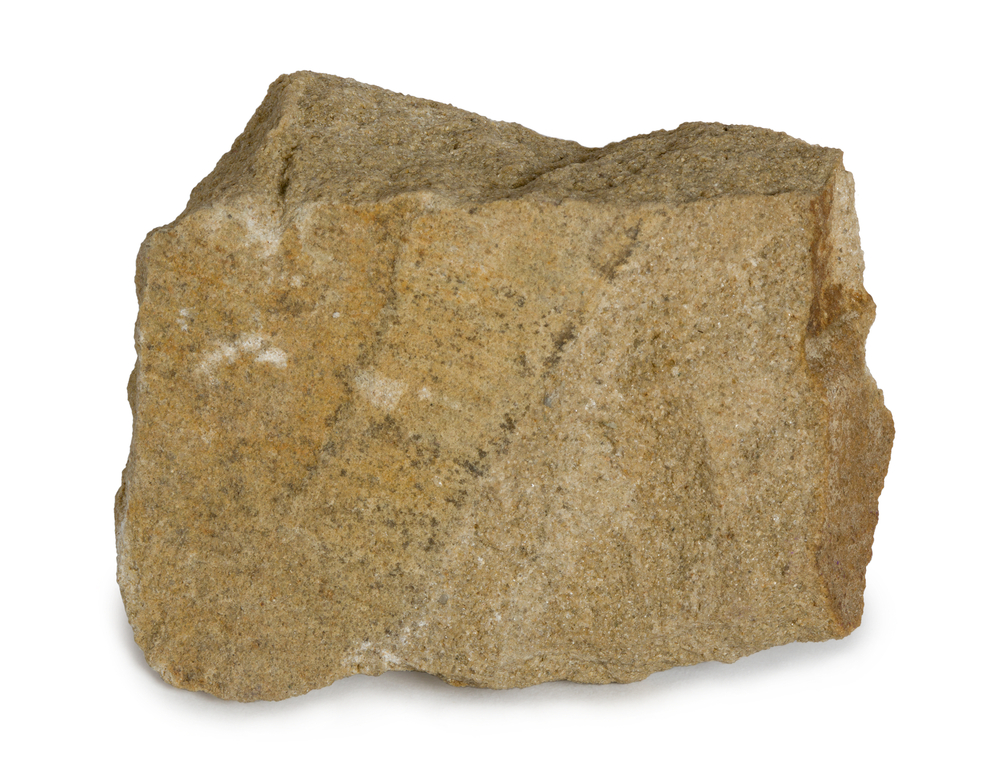
Also included in the category of sedimentary rocks are evaporites. These are minerals that crystallize directly out of the water as it evaporates on the surface. Some of the more commonly seen stones of this classification are Halite (NaCl) and Dolostone.
As a general rule, sedimentary stones will be porous, fairly soft, and may even be a bit crumbly. While sometimes used for building, they’re not quite as long-lasting or durable as more “high-end” construction materials like granite (igneous) or marble (metamorphic.)
Not all sedimentary stones are equal in this regard. Some limestone and sandstone formations, for instance, are highly regarded as building materials. Other stones known specifically for their durability and solid nature, such as jaspers and agates, also fall under this heading.
Classification Points
Like most stones, sedimentary rock is generally not a homogenous substance. Instead, we have a few main things to keep track of to determine how a stone is defined.
- Sediment Size– Sedimentary stones are generally classified mainly on the size of the sediments contained within them. At the higher end are conglomerates and breccia (differentiated by rounded versus angular fragments) while on the lower end are things like shale.
- Mineral Composition- Generally secondary compared to the sediment size, but an important part of classification. Most sedimentary stones are largely comprised of either silica or calcite, but other differing portions can change the classification of the rock.
- Cementation- What the stone is cemented together with, generally silica or calcite, is another factor that can influence how a stone is defined.
Examples of Sedimentary Rocks
Sedimentary rocks can generally be classified by their relation to humans as well.
Among the more common ones are sandstone, limestone, and even siltstone. Some of the more dramatic representations of sedimentary rocks can be quite hard and longstanding, in opposition to the general view of them as weaker stones. Banded iron formations, for instance, are comprised of alternating layers of hematite and cherts, creating an incredibly strong surface with bright coloration.
For the more significant sedimentary rocks, there are a few general ways that they come to be regarded as more than another layer of bedrock.
- Geological Oddities- Due to their method of formation, some sedimentary rock formations take on an extraordinary character that lets them be recognized in their own right. A great example is the Navajo Sandstone of Zion Valley, a dramatic formation that is colored by hematite and other iron oxides.
- Superior Building Material- Some of these stones make for great building materials and may take on the name of their region, such as Jacobvsville Sandstone from the Upper Peninsula of Michigan.
- Gemological Material- Chert is a sedimentary stone but it covers a wide range of different materials. Among them are agates and jaspers, which are both mainly known for their gemological uses and as popular display specimens.
Since sedimentary rocks are the most common type on Earth, they can be found almost anywhere.
The wide range of these materials, combined with their humble beginnings, means that there’s always more to explore. Whether it’s fossilized remains, ancient silica crystals, or just unique composition… there’s always something more to learn about sedimentary stones!
- Online rock and mineral club for collectors of all levels!
- Find community with like-minded rock and mineral enthusiasts.
- Monthly Giveaways!
- Free Access to Entire Digital Library of Products (annual memberships)

